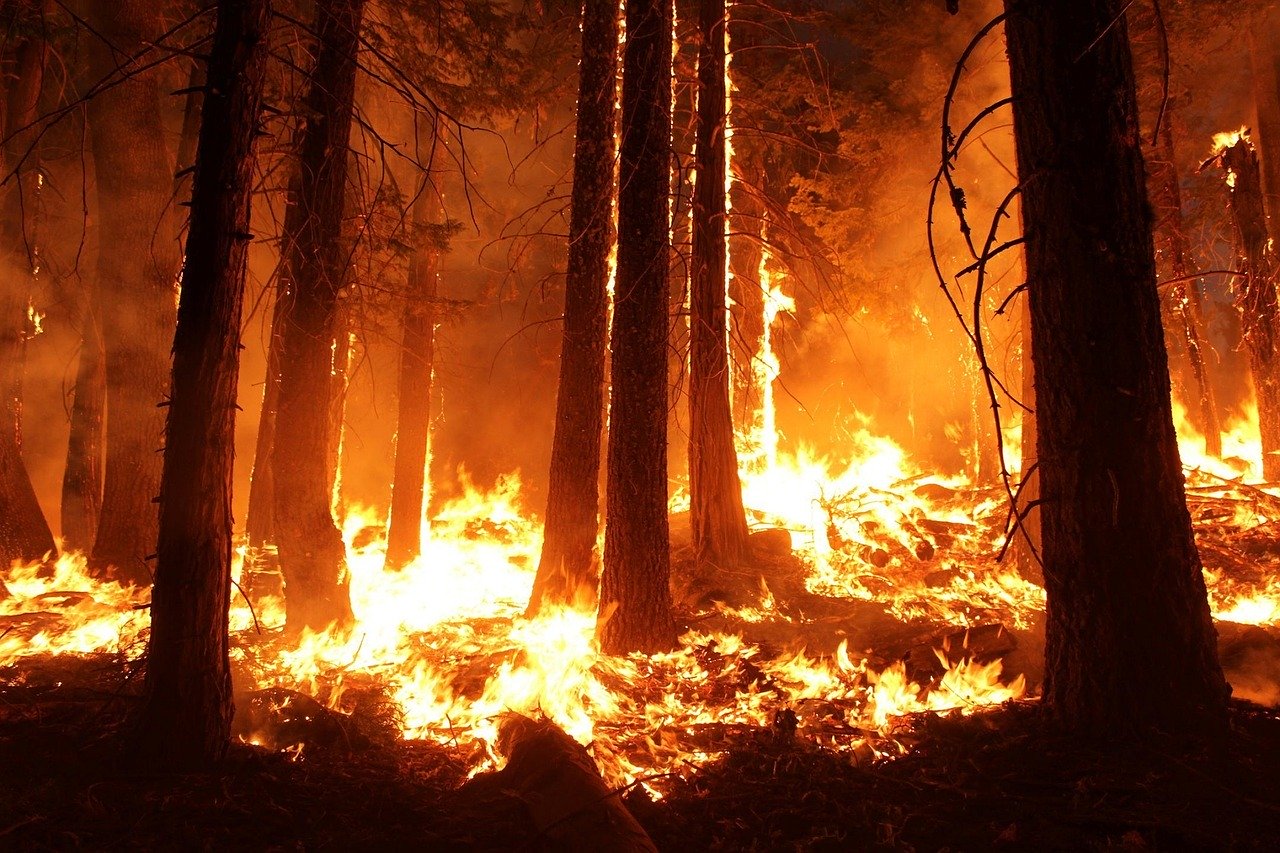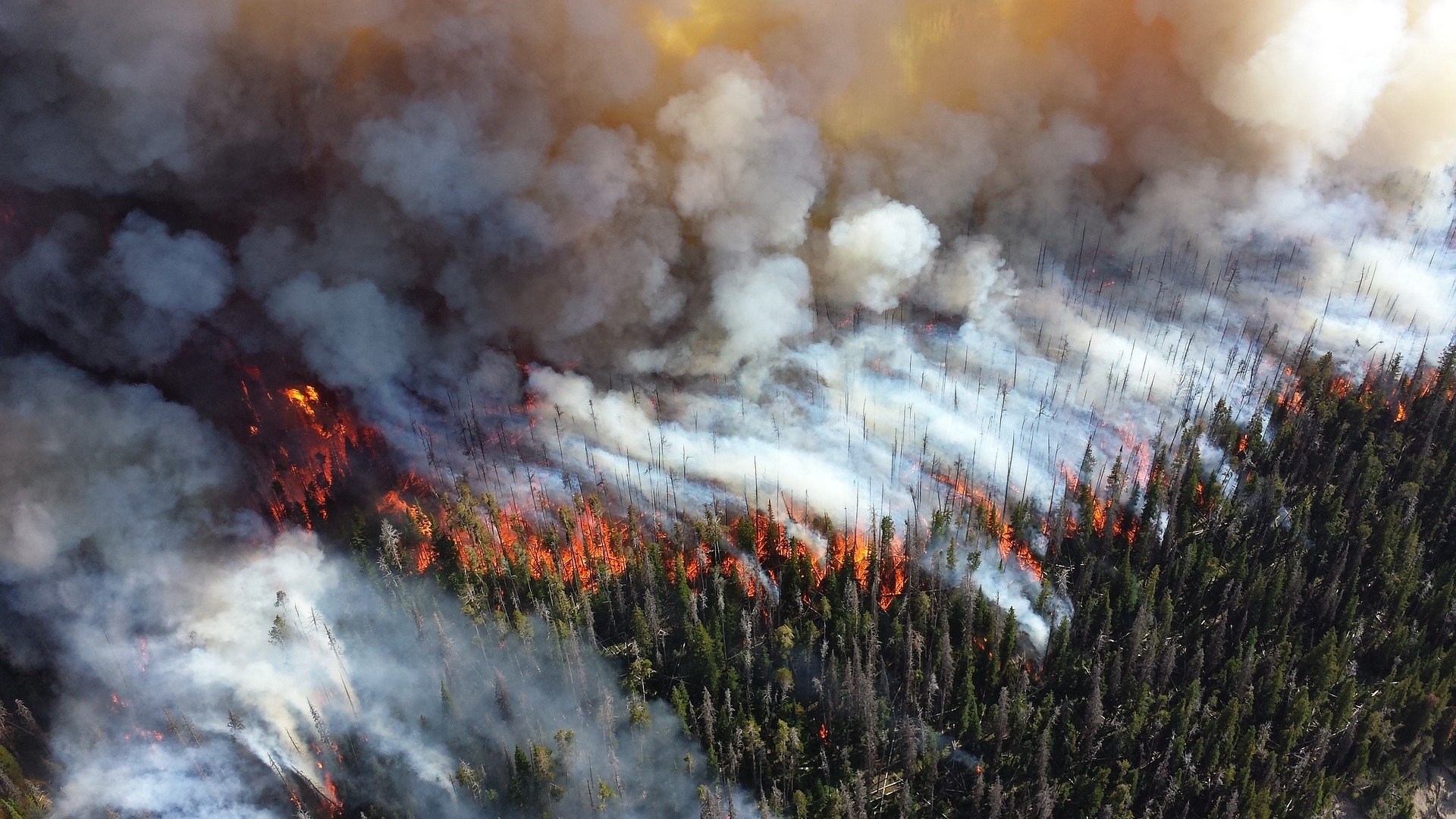By Francine Barone

A few years ago, HRAF posted a story titled Burning questions: evidence for off-site fire use by hunter-gatherers in eHRAF Archaeology, which was written in follow up to the publication of a journal article Burning the Land in the June 2015 issue of Current Anthropology. This article shed new light on present-day and historical fire setting practices among hunter-gatherers and foragers. In the article, the authors use the terms “on-site” fire (e.g. cooking fires) and “off-site” fire (e.g. slash and burn agriculture) for consistency with the archaeological literature. As stated in the article, “Despite their recorded abundance in the last four centuries, such ‘off-site’ uses have received far less attention in studies of early fire use than ‘on-site’ fire usage” (2015: 301). A significant lack of dedicated studies about fire use among ancient hunter-gatherers therefore led them to embark on a global cross-cultural study.
Recently, researchers from Australia and the United States have contributed further to this discussion, but with seemingly opposing points of view with regard to indigenous burning practices. Australian researchers posit that land management techniques focused on intentional setting of fires date back to ancient Aboriginal peoples about 50,000 years ago. In contrast, researchers in the United States argue that there is no evidence of this practice among pre-colonial Native Americans in New England, and that the practice came after European contact.
Australia
Since late 2019, bushfires have raged across Australia, causing mass destruction to the natural environment. According to a CNN report, “a 50,000-year-old solution could exist: Aboriginal burning practices.” The report is based on research from historian Bill Gammage, an emeritus professor at Australian National University, who studies Australian and Aboriginal history. According to Gammage, “Aboriginal people had a deep knowledge of the land … They can feel the grass and know if it would burn well; they knew what types of fires to burn for what types of land, how long to burn, and how frequently.”
As stated in the CNN report:
Aboriginal techniques are based in part on fire prevention: ridding the land of fuel, like debris, scrub, undergrowth and certain grasses. The fuel alights easily, which allows for more intense flames that are harder to fight. The Aboriginal people would set small-scale fires that weren’t too intense and clear the land of the extra debris. The smaller intensity fires would lessen the impact on the insects and animals occupying the land, too, as well as protect the trees and the canopy.
The CNN report describes why aboriginal techniques are so difficult to implement in modern times. The key is to set small, low-intensity fires to prevent larger bushfires. This is relatively simple in theory, but extremely difficult in practice, and requires a great deal of local knowledge and skill.
According to Gammage, “It comes down to knowledge … You have to have a lot of local skill … When do you a start a fire? What time of the year? What time of day? How long you want it to burn? What plants are there? What’s the weather like — is there a drought like now?”
Gammage explains that when fires are too hot, this enables the flammable undergrowth to germinate more. Early Europeans who attempted to copy Aboriginal techniques by lighting fires, made the fires too hot. They tried repeatedly, and failed. “Even though people can see the Aborigines doing the fire control, and could see the benefits,” said Gammage, “they couldn’t copy it.”

North America
A new study titled Conservation implications of limited Native American impacts in pre-contact New England has been published in the January 2020 issue of the journal Nature Sustainability. The study was led by archaeologists, ecologists, and paleoclimatologists from Harvard and other institutions. This study “overturns long-held beliefs about the role humans played in shaping the American landscape before and after European colonization.” According to David Foster, director of the Harvard Forest at Harvard University, “For decades, there’s been a growing popularization of the interpretation that for millennia, native people actively managed landscapes — clearing and burning forests, for example — to support horticulture, improve habitat for important plant and animal resources, and procure wood resources.”
However, data from the new study suggests a different story. Foster continues, “Our data show a landscape that was dominated by intact, old-growth forests that were shaped largely by regional climate for thousands of years before European arrival.” Native American peoples foraged, hunted, and fished without clearing much land. Fires were rare. Wyatt Oswald, the lead author of the study and a professor at Emerson College, states, “Forest clearance and open grasslands and shrublands only appeared with widespread agriculture during the European colonial period within the last few hundred years.”
Harvard Magazine describes the “The Historical Fallacy” uncovered by this study as follows:
The idea that Native Americans engaged in widespread management of the landscape before European contact appears to have gained credence among scholars with a 1953 paper, “The Indian as an ecological factor in northeastern forests,” by anthropologist Gordon Day. Historian William Cronon’s Changes in the Land popularized the ideas that Native Americans were engaged in widespread horticulture, and used prescribed burns to keep grasslands and pasturelands open. Cronon relied on the accounts of early European explorers such as Thomas Morton, who described Native Americans setting such fires twice yearly.
Dig deeper with eHRAF
It is important to underscore that these studies are regional (New England, Australia) in focus, and therefore have limited scope for making any broad cross-cultural generalizations. Our two databases, eHRAF World Cultures and eHRAF Archaeology, are both ideal for further research on this subject. Together they cover a broad range of cross-cultural topics on contemporary as well as past societies. This makes searching both databases especially useful when considering how present-day practices, cultures or regions compare with historical and ancient activities, or when seeking evidence of cultural change in specific regions of the world.
To get started with your research of fire use across cultures and traditions, try searching the databases for the following subjects:
- Slash and burn agriculture USE: Agriculture (240)
- Burning (to clear fields for agriculture) USE: Tillage (241)
- Burning (to encourage growth of specific plant species) USE: Environmental quality (318)
- Fire (372)
- Disasters (731)
- Land (ideas about) USE: Ethnogeography (823)
The texts in both databases are thoroughly subject-indexed at the paragraph level according to the Outline of Cultural Materials (OCM). Search results can also be filtered by Subsistence Type. Try using Horticulturalists or Hunter-Gatherers in your search. Below are examples of search queries that will some yield relevant results in each database.
eHRAF World Cultures
Here is the search query:
Here is one of the relevant results:
Although spring was the peak season for gathering green plants, this activity was subordinate to agricultural pursuits (Gilbert 1943:336). Agriculture occupied both men and women during this time of year, for land had to be cleared or burned off and the ground prepared for planting (White 1987: 139).
eHRAF Archaeology
Here is the search query:

Here is one of the relevant results:
While mid-Holocene foragers did not live in a closed-canopy forest unmodified by human activity, their impact on existing vegetation was probably quite limited (with the possible exception of fire management; Hammett 1992) (Gremillion 1996: 107).
Access eHRAF
Not yet an eHRAF member? Free trials are available for academic institutions or individuals. Please contact us at hraf@yale.edu for more information.
References
Gremillion, Kristen J. 1996. “Paleoethnobotanical Record For The Mid-Holocene Southeast.” Archaeology Of The Mid-Holocene Southeast. Gainesville: University Press of Florida. https://ehrafarchaeology.yale.edu/document?id=nn50-022.
White, Max Edgar. 1987. “Ethnoarchaeological Approach To Cherokee Subsistence And Settlement Patterns.” Ann Arbor, Michigan: University Microfilms International. https://ehrafworldcultures.yale.edu/document?id=nn08-029.